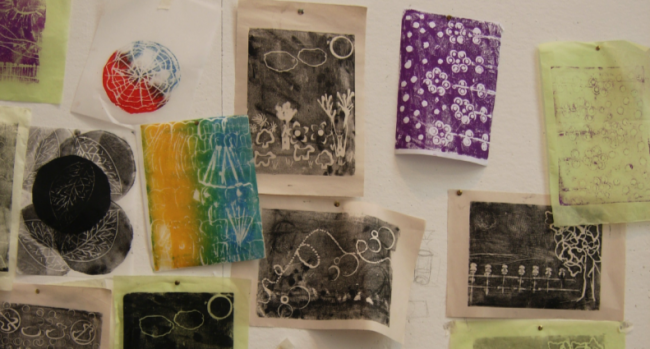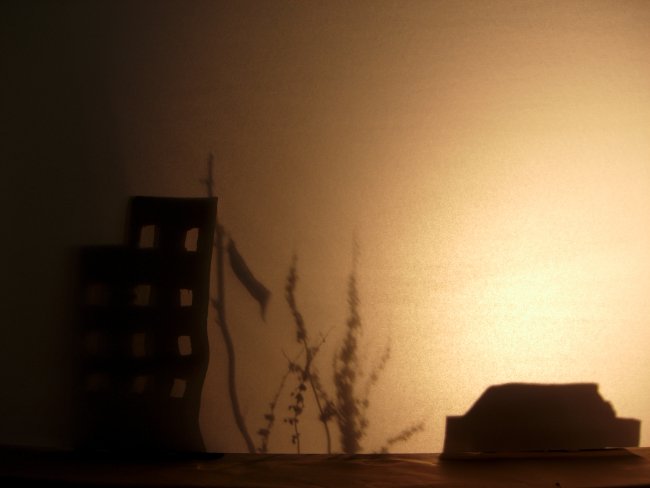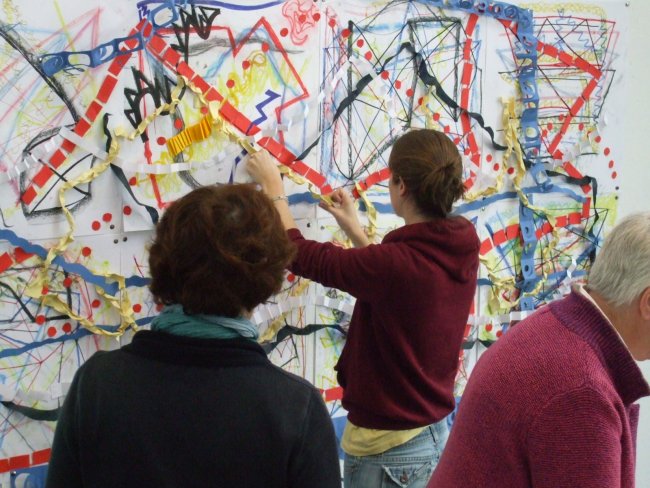Background to primary teacher in-career courses at IMMA
Throughout the 1990s, and up until 2007, IMMA ran in-career development courses for primary teachers during July and August. The five day in-career courses were approved by the Department of Education and therefore participating teachers received additional leave (EPV). Most summers IMMA ran at least two courses. The fee for the week-long course was €60.00, which represented good value at the time. In order to achieve the Department’s approval, the courses had to be strictly in line with the primary school curriculum and had to fit within a specified time table. By about 2005, three things became apparent:
• Attendance numbers for the IMMA courses were dropping as the market place for summer in-career courses had become crowded. On-line courses were rising rapidly in popularity.
• Many teachers, due to recent training or following the implementation of the 1999 primary school curriculum, were showing signs of increasing familiarity with the processes and ideas covered in the IMMA courses.
• It became less clear over time how the in-career course integrated into IMMA’s main services and programmes, such as free guided tours for groups or the annual Primary School Programme http://www.imma.ie/en/subnav_7.htm Throughout the 1990s there had been a clear link between teachers participating in the summer course and then subsequently visiting IMMA with their classes in the following academic year. This link weakened in the new century.
The remit of IMMA is to represent and provide access to significant contemporary and modern art. In 2007 it became necessary to evaluate whether summer courses were still contributing efficiently to fulfilling that remit. One thing was clear to Education & Community staff at IMMA: we had to engage primary teachers with experiences of the continuous evolution of contemporary art because, apart from their own professional and personal development, primary teachers remain key connection points with under-12 visitors to IMMA. We needed to continue offering primary teachers some sort of forum through which they could gain insight into contemporary art ideas, practices and processes. The question was how best to continue this provision, and when to do it.

Print with Janine Davidson, February 2010.
The Curriculum & Contemporary Art 2008/09
IMMA Education & Community developed a new six part series of talks and workshops for primary teachers called the Curriculum & Contemporary Art.
Launched in September 2008:
• Each session (roughly one a month, September to March) would take place on Saturdays, 10.00am to 1.00pm.
• There was no fee and participants could book single or multiple sessions.
• Each session was linked to a strand of the primary school curriculum, with particular media being the link between a guided tour of a specific exhibition and a practical workshop led by a freelance artist.
• Tours would be led by a member of the IMMA gallery staff, the Mediators.
• Artist Claire Halpin had a link role across all sessions, leading some workshops, with guest artists lined up to lead single sessions: John O’Connell, Janine Davidson, Joe Coveney and Lucinda Jacob.
After a promising start in September 2008, the series was disrupted mid-run in January 2009 because IMMA’s galleries were forced to shut unexpectedly due to essential maintenance. By the time IMMA fully reopened in March 2009 too much momentum had been lost, some sessions couldn’t be rescheduled and attendance had dropped significantly. As a result we decided to see if we could realise the potential of this series with a second run in September 2009, following the same format as the previous season.

The Second Series 2009/10
All six dates for the second series of the Curriculum & Contemporary Art were fully booked almost immediately after its launch in late August 2009. Such was the demand that a few sessions were hugely oversubscribed. Obviously this was an encouraging start.
Session 1: DRAWING, Saturday, 26th September 2009
Participants explored contemporary ideas about drawing and visited the exhibition by Terry Winters. Mediator: Evy Richard
http://www.imma.ie/en/page_197019.htm
Session 2: CONSTRUCTION, Saturday, 17th October 2009
Participants visited the IMMA Collection exhibition Between Metaphor and Object, which included many examples of British sculpture from the 1990s. The IMMA Primary School Programme focussed on this exhibition from October 2009 to March 2010. Mediator: Jenny Hickey
http://www.imma.ie/en/page_197017.htm
Session 3: PAINT/ COLOUR, Saturday, 21st November 2009
Participants experienced contemporary approaches to using colour and paint, after visiting artworks by Lynda Benglis. Mediator: Evy Richard
http://www.imma.ie/en/page_197022.htm
Session 4: COMPLEMENTARY MEDIA (NEW MEDIA), Saturday, 30th January 2010
Participants visited the very popular exhibition Picturing New York which featured photographs from the MoMA collection. Artist John O’Connell led the workshop afterwards exploring shadows and light projection. Mediator: Evy Richard
http://www.imma.ie/en/page_197023.htm
Session 5: PRINT, Saturday, 27th February 2010
After exploring paper-based work by Patrick Scott and Anne Tallentire, as well as Jorge Pardo’s photo-mural, artist Janine Davidson led a print workshop in the IMMA studios. Mediator: Olive Barrett
http://www.imma.ie/en/page_212185.htm
http://www.imma.ie/en/page_212186.htm
Session 6: FABRIC & FIBRE, Saturday, 20th March 2010
Using the medium of fabric and fibre, Claire Halpin explored some of the ideas of curatorial selection and juxtaposition found in the Collection exhibition What happens next is a secret. Mediator: Séamus McCormack
http://www.imma.ie/en/page_212177.htm
www.facebook.com search: Whathappensnext Isashecret

After this series ended in March, it was reviewed from the perspective of IMMA staff and facilitating artists:
• The participants represented a cross-section of professional experience.
• The series provided some flexibility for the teachers that managed to secure places; they could opt to attend one session or multiple sessions.
• There was a core group of 8 or 9 teachers who were at almost every session. This gave each session a sense of general progression.
• This was heightened by the fact that all participants were attending purely out of their own motivation and not due to professional incentives or accreditation (such as EPV for summer courses). Their participation was all the more appreciated by IMMA staff given the particular budgetary situation confronting teachers in 2009/10;
• Through talking with participants, it emerged some teachers were returning from specialist posts and career breaks, and the series was perceived as a means through which they could ease the transition back into mainstream teaching or enable some up-skilling. Other teachers were interested in the series as it represented something new and relevant to them.
• There was a strong sense of personal development from the teachers’ interaction with facilitators and artists - the series related to life-long learning and adult education as much as it did to teachers’ professional development and children’s art education.
• The sessions were spread out over seven months, so those who participated in multiple sessions had time to reflect on their experiences at IMMA and to try out ideas in the classroom in between sessions; as well as having a chance to feedback to Claire Halpin afterwards as to how things had worked out for them.
• Some teachers reported back that they had taken an idea or process from a workshop, adapted or simplified it (or added to it) according to their own particular classroom context or the time available to them.
• The period of time between sessions allowed teachers to experience a wide variety of art practices at IMMA - exhibitions came and went. Teachers saw how the same gallery spaces could be transformed each time by the work of different artists.
• Spreading out the sessions created a more relaxed atmosphere compared to the intensity of a summer course with five consecutive weekdays.
• Although there was an overarching structure connecting specific exhibited artworks to specific primary school curriculum strands, by the end of the series it was obvious to teachers that any exhibition at IMMA could be a springboard to exploring any strand of the curriculum in the classroom. What was important was that artworks were fully experienced and discussed, and that the artworks’ ideas were identified and really explored. After that, the experience of material processes added understanding and insight into current practices.
IMMA used Surveymonkey.com to get feedback from participants.
About three quarters of the participants responded:
• Just over half of the respondents brought a class to IMMA in the academic year 2009/10;
• Almost 80% of respondents found that participation in the workshops was of use in their classroom work; the other 20% felt it was of some use.
Also in this feedback survey, we asked about the factors that would affect teachers when they were deciding whether or not to attend a similar series again (factors were listed on an 8 point scale from "least important" to "most important"):
• Respondents were fairly evenly split on whether Department of Education accreditation was of major or minor importance;
• Over half thought that getting ideas for classroom activity is the most important factor;
• 50% felt that art appreciation and personal creative activity is quite an important factor, while personal development scored highly in importance for all respondents;
• 50% also felt that the venue, its location and facilities was an important factor;
• Although half the respondents thought the social aspect of the workshops was either quite or very important, nearly a quarter of respondents thought it was a less important factor.
The Follow Up 2010/11
Due to the amount of oversubscription for the 2009/10 series, there definitely seems to be enough interest to run a very similar series next year (obviously those that couldn’t attend any session will be interested, but so will teachers that missed particular sessions). We also have to think about teachers who attended all sessions this year and now want something extra.



No comments added